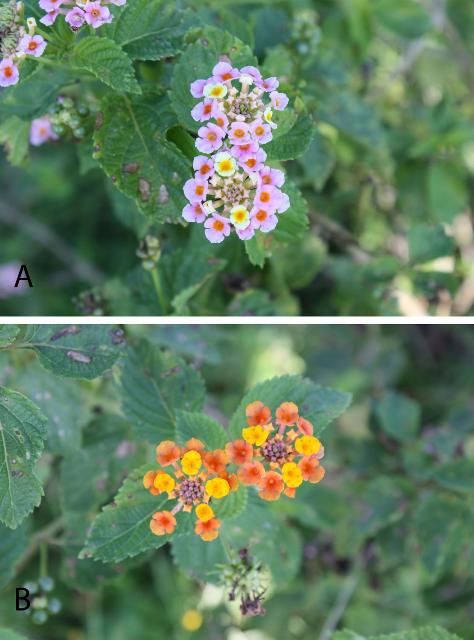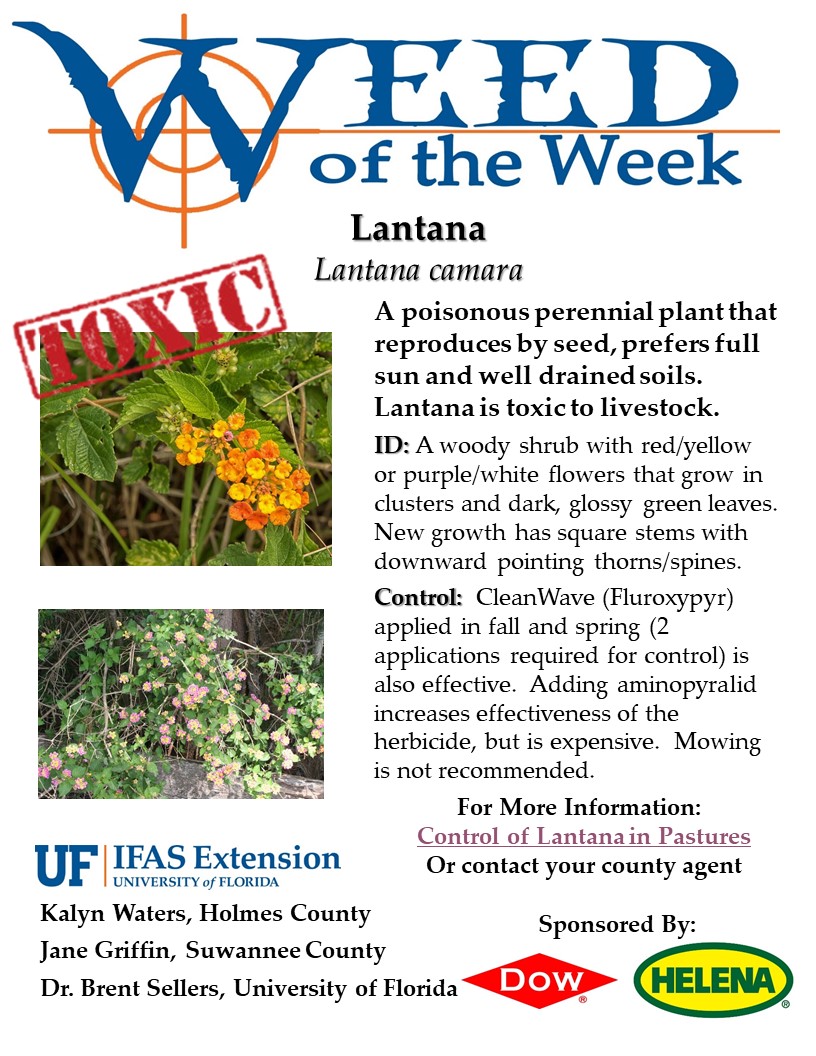First introduced into the southern states as a perennial ornamental, Lantana is easily identified during the growing season by its vibrant multi-colored flowers. Currently, Lantana is listed as one of the top 10 more troublesome weeds in Florida, with documented occurrences in 58 of 67 counties. While it is still sold as an ornamental, commercially available varieties are sterile to control for the spread of the weed. The leaves of the plant are toxic if consumed by grazing animals. If consumed, symptoms of skin peeling and cracking typically come on slowly. Lantana is not only toxic to livestock, but has been shown to produce toxin in its leaves and stems that slow or stop the growth of neighboring plants, allowing it to thrive, especially in disturbed areas.
For help to identifying weeds, or developing a control plan for your operation, please contact your county extension agent.
For more information on this topic please see the following UF/IFAS Publication:
Control of Lantana in Pastures
- Horn Fly Control In Cattle - June 20, 2025
- Tips for Introducing New Chickens into Your Coop - April 25, 2025
- Tips for a Great Chicken Coop - April 11, 2025


